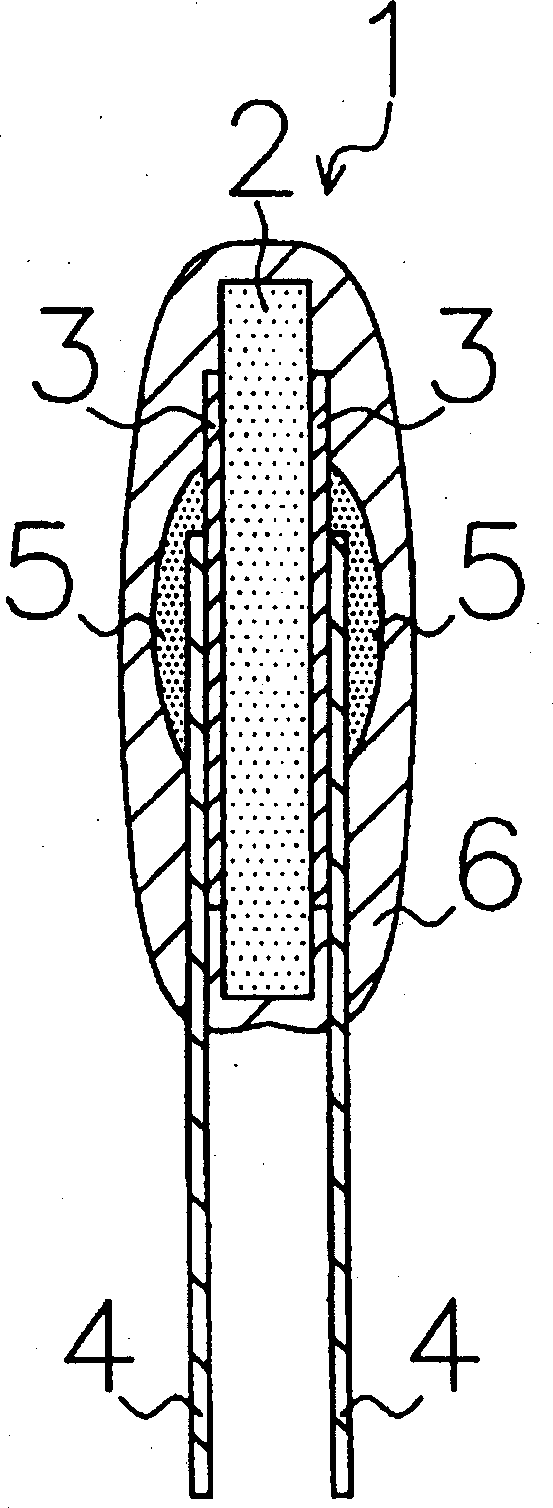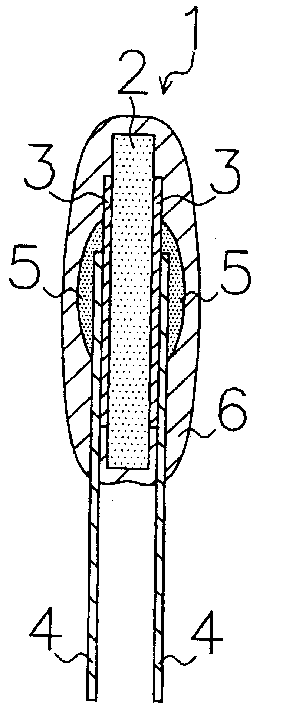Ceramic electronic element
A technology of electronic parts and ceramics, which is applied in the field of ceramic electronic capacitors and can solve the problem of high heating temperature of ceramic bodies
- Summary
- Abstract
- Description
- Claims
- Application Information
AI Technical Summary
Problems solved by technology
Method used
Image
Examples
Embodiment
[0025] Next, as a conductive component, 33% by volume of Ag powder with a particle size of 0.1 to 5 microns, 6% by volume of glass powder of samples 1 to 9, and 61% by volume of excipients were mixed, and ground with a three-roll mill. After grinding, the conductive pastes of samples 1-9 were obtained. As the excipient, a solution prepared at a ratio of 80% by weight of terpineol and 20% by weight of ethylcellulose was used.
[0026] Next, screen-print the conductive pastes of samples 1 to 9 with a 3mm diameter template on both main surfaces of a ceramic body made of barium titanate with a target capacitance of 1nF, and heat it in air at 800°C for 2 hours. The condition of sintering to form the terminal electrodes, and 200 test samples of samples 1 to 9 were produced respectively.
[0027] Here, the penetration depth of the glass from the surface of the ceramic body was measured for each of 100 samples of test samples 1 to 9, and the measurement results are summarized ...
PUM
| Property | Measurement | Unit |
|---|---|---|
| ignition point | aaaaa | aaaaa |
Abstract
Description
Claims
Application Information
 Login to View More
Login to View More - R&D
- Intellectual Property
- Life Sciences
- Materials
- Tech Scout
- Unparalleled Data Quality
- Higher Quality Content
- 60% Fewer Hallucinations
Browse by: Latest US Patents, China's latest patents, Technical Efficacy Thesaurus, Application Domain, Technology Topic, Popular Technical Reports.
© 2025 PatSnap. All rights reserved.Legal|Privacy policy|Modern Slavery Act Transparency Statement|Sitemap|About US| Contact US: help@patsnap.com


